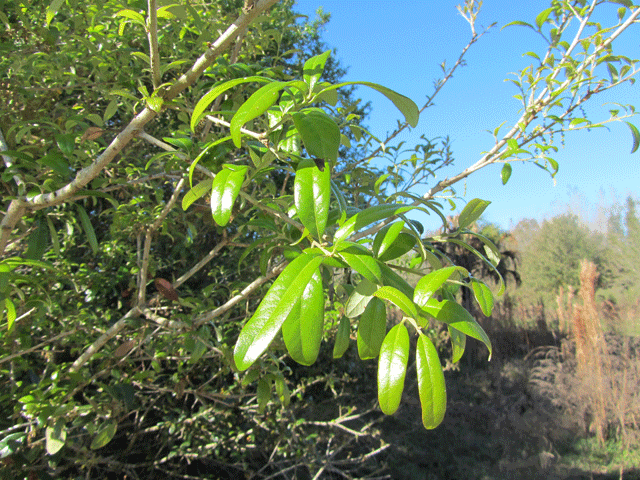Despite the fact that we describe live oaks as evergreen, they drop their leaves every year in late February or early March. I guess we still call them evergreens because the transition happens so quickly. The leaves fall to cover the ground, but almost immediately, the live oak branches are filled up with new leaves.
Leaves in general are a valuable material that should be recycled, but live oak leaves are especially useful. Here are three ways to use them:
Fertilizer: The easiest way to make use of the leaves is to let them decompose on the lawn providing organic material for the lawn and other landscape plants, and returning nutrients to the soil. They are a little slower to decompose than leaves from pecans, red oak or cedar elms because of their dense mass, but they still decompose within a few months with mowing
To speed up the process, mow the leaves a few times. That makes especially good sense now if you have winter weeds in your lawn. The rescue grass, bedstraw, henbit and chickweed are trying hard to produce seed heads. Keeping them mowed won’t completely eliminate weeds next winter, but it may reduce the numbers.
Mulch: Rake up or catch the leaves with your mower from the lawn and place them in a vegetable or flower garden or in a shrub border. It’s also relatively easy to blow the leaves into piles with a leaf blower. They can be applied relatively thin even at just 2 inches deep, they will still provide insulation for the plants roots and reduce soil compaction under paths.
Compost: Oak leaves are relatively nitrogen-rich and full of moisture when compared to other leaves, so they make a good soil additive. There is less bagging and transporting of organic material to the landfill now that most area neighborhoods have access to the green organic material recycling bins. The old option of providing your collected leaves to your gardening neighbors is still an option if you want to remove the leaves but also want to recycle the valuable organic material.
Trimming Live Oak Trees: A not-so-happy issue concerning live oak trees is the threat of oak wilt. We are in the prime susceptibility time (March 1 through June 30) so avoid pruning oak trees if you can. The recommended time to prune is the heat of the summer or the coldest of winter. If you must cut off a branch or a tree is wounded in some other way, paint the wound immediately with tree pruning paint or black spray paint.
The disease is easy to prevent but difficult to cure and will result in the death of individual red oaks and live oaks at the rate of 100 feet or more per year through the roots of the interconnected trees. The symptoms usually show up in May when an infected oak tree will have all its leaves turn color and hang dead on the tree. These dead oak trees and their firewood form the fungal mats that are carried by sap beetles to fresh wounds on uninfected oaks. Avoid carrying moist oak firewood from oak wilt infection areas such as the Hill Country.
Painting the wounds prevents the spread of the disease spores by sap beetles, but once the disease is in place, trenching to break the root grafts is the only way to stop the progress. Individual trees can be protected by injection of Alamo Fungicide by a trained and certified arborist, but the disease keeps spreading.
Live oaks die over a longer period as sections of the tree die section by section. The leaf symptoms are usually a red or yellow color at the veins. Go to texasoakwilt.org for pictures and more information about the disease. Experts on the disease and its treatment can be found with the Texas A&M Texas Forest Service and in local arborists who have been certified by the Forest Service.
Don’t be deceived by claims that oak wilt is a disease that can be prevented or treated by applications of organic material such as cornmeal and extra watering. If you don’t prevent it by painting the wounds to avoid contact from beetles, trenching is the only way to stop the disease from spreading in adjoining live oaks.
Article by Calvin Finch –
https://www.expressnews.com/lifestyle/home-garden/article/Oak-leaves-great-for-the-garden-but-oak-wilt-is-13688579.php





